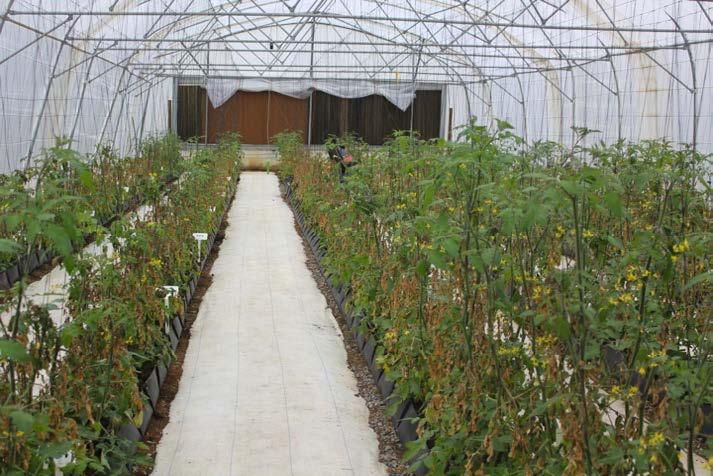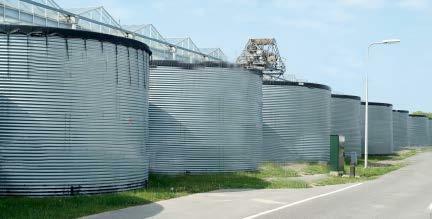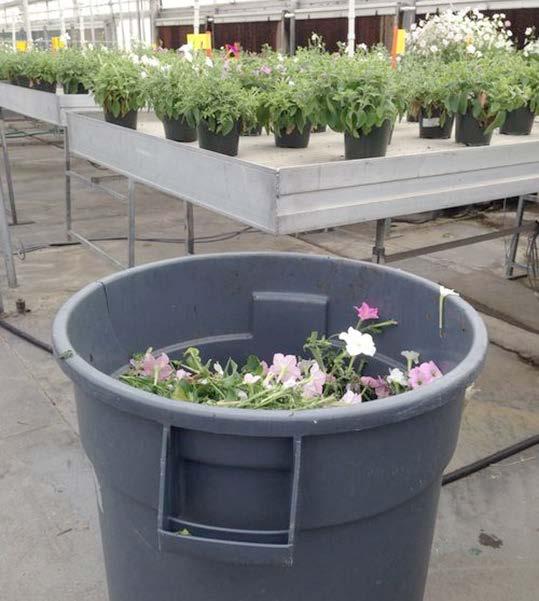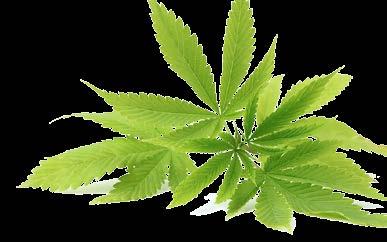
5 minute read
Art of greenhouse ventilation management
In South Africa we tend to focus on removing heat out of our greenhouses. But ventilation has multiple effects, which must be considered when making a management decision. During the course of the day, and depending on climatic conditions, a grower will have different objectives they are trying accomplish with ventilation. Ventilation takes place at different periods of the day.
• Morning
Advertisement
• Day – Warm
• Day – Cool
• Pre night - Night
Morning
When the sun rises the sunlight stimulates transpiration. This will cause the humidity in the greenhouse to rise – the rate of the rise will be determined by canopy leaf area. The crop and its fruit are still relatively cool in temperature coming from the night. As the moisture content of the air raises (increasing humidity) the risk of condensation forming on the relatively cool crop increases, particularly the fruit, which heat up slowly in the morning because of their mass.
When the house is closed, the air is still and humid, so crop transpiration is at a minimum. This can result in leaf edge “burning” as the crop is not prepared for the rapid increase in transpiration with the increasing light intensity.
It is therefore important to open the greenhouse before sunrise to remove humidity and create air movement. This will stimulate transpiration and prepare the crop for the increasing transpiration. After sunrise, even on cool mornings, it is necessary to ventilate to remove humidity to prevent the risk of condensation on the crop. This can assist dramatically in disease prevention. Ventilation also assists in refreshing CO2 in the greenhouse, which can be rapidly depleted by a crop with a large leaf area on a sunny day.
Day – Warm
During hot high light intensity days heat builds up in the greenhouse. On these days it is necessary to ventilate to remove the heat. But when you open vents you also remove humidity and promote air movement, these actions increase transpiration and increase water loss from the crop.
When crops transpire they cool and humidify the air, so be careful about ventilating too aggressively on warm days. It is actually possible to increase greenhouse temperature if you ventilate too much! How? Remember the crop does have the ability to cool the air around it, if you are ventilating too much (replacing air too often) you are not giving the crop sufficient opportunity to humidify and cool the air. This applies if you are also using fogging systems.
Your fogging system and crop work hard to add humidity so don’t waste it! Also keep in mind, aggressive air movement and removal of humidity creates a high water loss environment for the crop, which can result in wilting or promote physiological disorders such as blossom end rot. Do not chase temperature only. Crops can tolerate significantly higher growing temperatures if humidity is preserved within reason.
Day - Cool
On cool, cloudy days it is tempting to keep your greenhouse closed to accumulate heat. But remember if
the house is closed humidity is going to increase. This increases the risk of condensation on your plants and disease. Also it can lead to depressed transpiration, which in turn limits nutrient uptake possibly resulting in nutrient disorders.
So even during cool times of the year it is better to ventilate during the day to stimulate transpiration, keep the crop dry and also to refresh CO2. Yes, you will lose some heat and crop development may slow. But a disease free crop is generally more productive than a diseased crop. Rather have a cooler, dry crop than a warm, wet crop.
Heavily diseased tomato crop due to condensation on crop
Pre-night - Night
This is one of the most important times of day to manage ventilation is pre-night. During the day the crop is transpiring adding a lot of moisture to the air, increasing the humidity.
As the sun set the crop starts to cool and the risk of condensation on the crop increases. The more humid the air at the time of sunset, the greater is the risk of condensation on the crop. For this reason it is advised to open up the greenhouse an hour or two before sunset and flush out that humid air. This will dramatically reduce the risk of disease by reducing air humidity and risk of condensation on the crop.
In areas with mild conditions you can actually consider leaving the greenhouse vents open over night – depending on factors such as wind and rain. This will ensure good air movement, limit high humidity pockets and reduce the risk of condensation.
In colder areas where heating is being used, the crop can still release significant humidity over the night. If the greenhouse is closed the whole night the humidity will accumulate and increase the risk of condensation and high air humidity, both conditions bring about disease development. It is therefore necessary to ventilate over the night period, even on cold nights to push the warm humid air out the house and replace it with cool drier air. However, in these instances the vents only need be slightly opened or in the case of pad and fan, use only the small gable fans for a short period of time to remove humidity without losing too much heat energy.

Strategies differ
The above is only a basic introduction to ventilation management. Ventilation strategy will be influenced by greenhouse type, design, climate control technology and crop leaf area. Even in low technology greenhouse systems these principles can be applied to improve crop performance and reduce disease pressure, but the best results will be achieved when combined with automation and monitoring the climate. Once a grower starts to monitor climate: light intensity, wind, temperature, plant temperature and humidity, they can refine and optimize their ventilation strategy.
Always remember: Do not chase a single climatic variable, keep in mind that when we take an action there is normally more than one climatic factor influenced, which in turn influences the crop. Always think about what you want to achieve – crop or climate wise; how will different ventilation actions influence the climate and crop; and then finally make a decision. By Craig Fulton
Heavily diseased tomato crop due to condensation on crop
DON’T LOSE OUT ON IMPORTANT ADVICE FOR GREENHOUSE PRODUCTION!
Subscribe now!
Electronic subscription for 6 bi-monthly issues is R 350.00 (ZAR) annually
Email the details as outlined here to subscribe for your bi-monthly copy of Undercover Farming!
Send this information to magazine@axxess.co.za with your subscription deposit proof of payment.
For more information contact Marion Oosthuizen (+27) (0) 71 693 9300 or e-mail management@axxess. co.za NAME:
SURNAME:
ADDRESS:
CODE:
CONTACT NUMBER: EMAIL ADDRESS:








